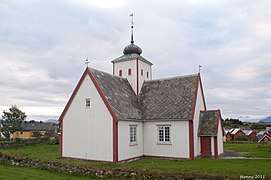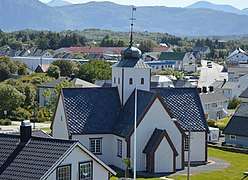Bud Church
Bud Church (Norwegian: Bud kyrkje) is a parish church of the Church of Norway in Hustadvika Municipality in Møre og Romsdal county, Norway. It is located in the village of Bud on the northwestern shore of the Romsdal peninsula. It is the church for the Bud parish which is part of the Molde domprosti (arch-deanery) in the Diocese of Møre. The white, wooden church was built in a cruciform style in 1717 by an unknown architect. The church has a unique onion-style dome and spire on top. The church seats about 250 people.[1][2][3]
| Bud Church | |
|---|---|
| Bud kyrkje | |
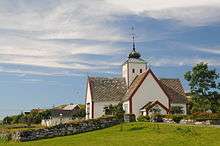 View of the church | |
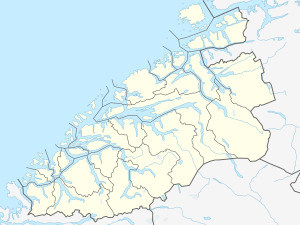 Bud Church Location of the church 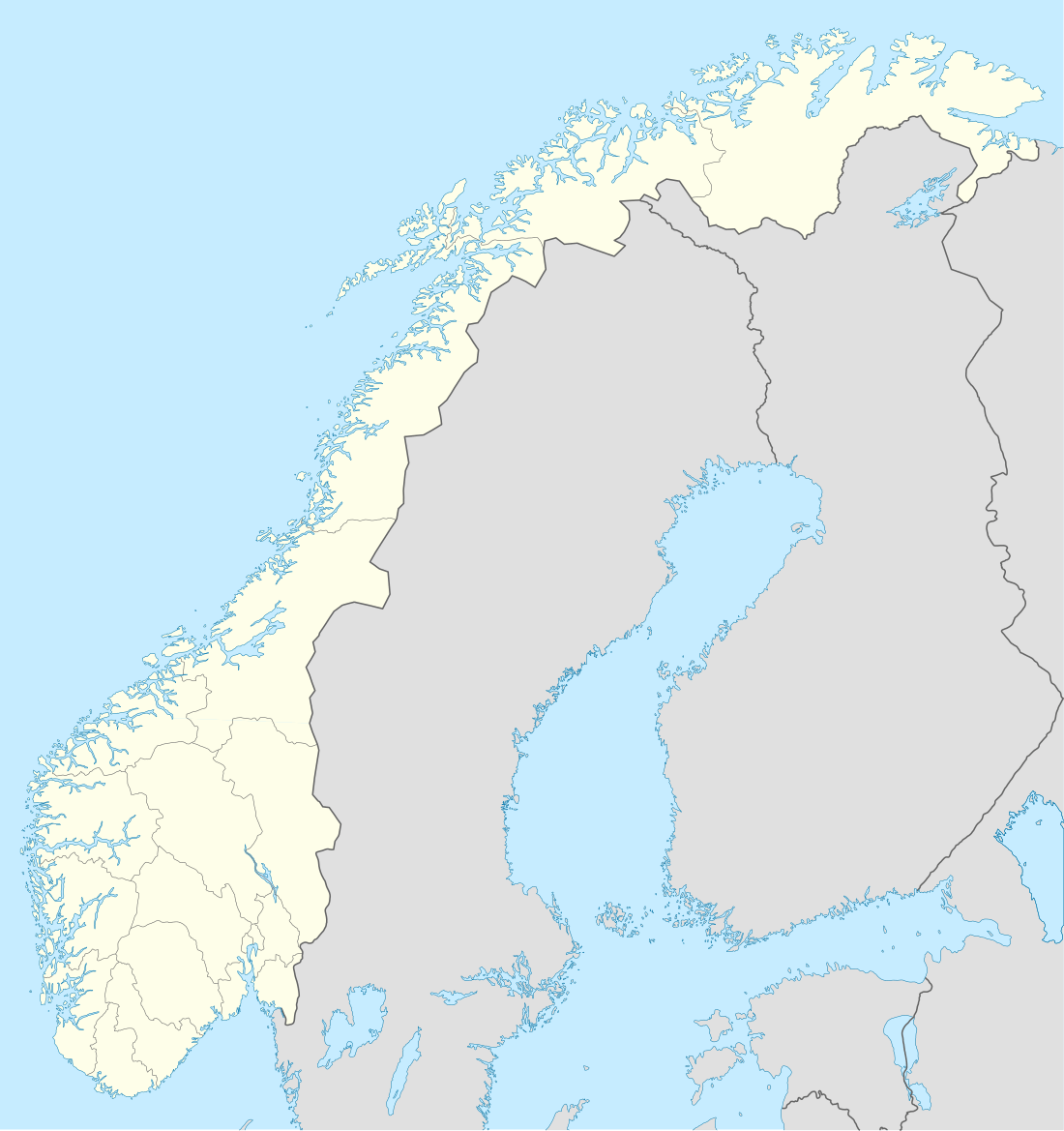 Bud Church Bud Church (Norway) | |
| 62.9080°N 6.9106°E | |
| Location | Hustadvika Municipality, Møre og Romsdal |
| Country | Norway |
| Denomination | Church of Norway |
| Churchmanship | Evangelical Lutheran |
| History | |
| Status | Parish church |
| Architecture | |
| Functional status | Active |
| Architect(s) | Unknown |
| Architectural type | Cruciform |
| Completed | 1717 |
| Specifications | |
| Capacity | 250 |
| Materials | Wood |
| Administration | |
| Parish | Bud |
| Deanery | Molde domprosti |
| Diocese | Møre |
History
The earliest existing historical records of the church date back to 1589, but it was built before that time. That building was partially demolished in 1648 and then expanded to the north and south. It burned down as a result of lightning strikes in 1709. The present white wooden church was built in 1717 and was consecrated by the Bishop of the Diocese of Nidaros, Peder Krog. The 1717 church was built a little to the northeast of the site of the old church.[4]
Media gallery
See also
References
- "Bud kyrkje". Kirkesøk: Kirkebyggdatabasen. Retrieved 2019-06-01.
- "Oversikt over Nåværende Kirker" (in Norwegian). KirkeKonsulenten.no. Retrieved 2019-06-01.
- "Bud kyrkje". lokalhistoriewiki. Retrieved September 1, 2018.
- "Bud kyrkjestad" (in Norwegian). Norwegian Directorate for Cultural Heritage. Retrieved 2019-06-02.


